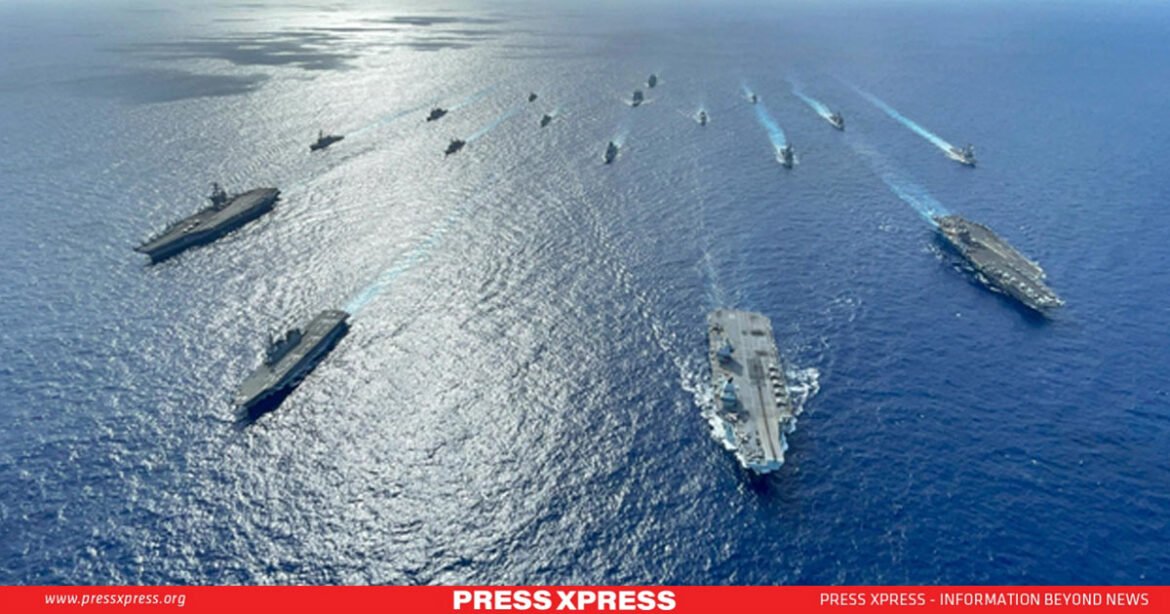Recent events have thrust the Middle East into a state of heightened tension, with the United States taking decisive action to prepare for potential escalations. The assassination of Hamas leader Ismail Haniyeh and the killing of Hezbollah’s Fuad Shukr have sent shockwaves through the region, prompting the US to bolster its military presence and readiness.
Causes of Mobilization
The ongoing conflict between Israel and Hamas serves as a primary catalyst for the current situation. Since October 7, Israel has been conducting intense military operations in Gaza, following a Hamas attack that resulted in significant Israeli casualties. The assassination of Haniyeh in Iran has further intensified fears of retaliation from Iran and its allies.
You Can Also Read: Who’s Cooking Up Chaos in the US Election Drama?
Adding fuel to the fire, Iran’s drone attacks on Israel and the subsequent Israeli strike on an Iranian consulate have drawn the US into a position where it must prepare for various threats. The situation remains volatile, with the potential for wider conflict as regional actors respond to these provocations.
US Mobilization and Its Implications
In response to these developments, the US is deploying additional combat aircraft and increasing its military readiness to protect its interests and allies. The Defense Department is moving aircraft carriers, destroyers, and other equipment to the Middle East, focusing on deterrence and safeguarding US forces from possible Iranian retaliatory attacks.
This increased military presence serves multiple purposes: deterring Iran and its proxies from further aggression, providing rapid response capability, and ensuring stability in the region. The White House has emphasized its commitment to Israel’s defense, underscoring the strategic importance of these deployments.

Impact on US Election
The US military’s actions in the Middle East are likely to influence the 2024 election. President Biden’s approach to the region could sway voter opinions, with his administration’s support for Israel resonating with many American voters, particularly evangelical Christians and Jewish communities.
However, Biden may face criticism from progressive voters who oppose his stance on Israel. These voters are crucial for Democratic turnout, and any perceived weakness in response to Iranian threats could be exploited by Republican candidates.
If re-elected, Trump may align more closely with Israel’s right-wing policies, potentially impacting US foreign policy and defense strategies. His administration might focus on strategic dominance rather than direct military interventions. The election outcome will shape US defense spending and military aid, especially concerning conflicts in the Middle East.
Analysis of the Situation
The US military’s mobilization in the Middle East suggests a strategic recalibration to address escalating threats. This move reflects the US’s commitment to regional stability and the defense of its allies, particularly Israel. The deployment of additional troops and equipment highlights the US’s preparedness for various scenarios and its determination to protect its forces and deter potential Iranian aggression.
Experts believe this mobilization sends a clear message of deterrence and underscores the strategic importance of the Middle East in US foreign policy. The integration with regional partners through joint military exercises further demonstrates the US’s commitment to collective security and readiness to address emerging threats.
Possible Future Scenarios
The future of the Middle East remains uncertain, with several scenarios possible. A continuation of low-level fighting in Gaza seems most likely, involving prolonged conflict without resolution and causing ongoing instability. Another possibility is a full-scale war involving multiple regional actors, which would have devastating consequences for the global economy and regional stability.
A more optimistic scenario involves a robust peace effort, led by the US and other global players, potentially leading to long-term stability and reconstruction in Gaza. However, this outcome is considered less likely due to deep-rooted political and social issues.
US foreign policy will continue to play a crucial role in shaping the region’s future. The Biden administration’s approach focuses on deterrence and maintaining alliances. If the US fails to manage regional tensions effectively, the risk of broader conflict increases.
Conclusion
As the US military prepares for various scenarios in the Middle East, tensions with Iran, ongoing conflicts involving Israel, and regional instability drive this mobilization. The US aims to deter aggression, protect its interests, and support allies in a volatile situation that has the potential for both conflict escalation and diplomatic resolutions.
The coming months will be critical in determining the trajectory of events in the Middle East. The US’s ability to navigate these challenges will not only impact regional stability but also shape its global standing. As the world watches, the decisions made by political leaders and military strategists will have far-reaching consequences for the future of this troubled region.


